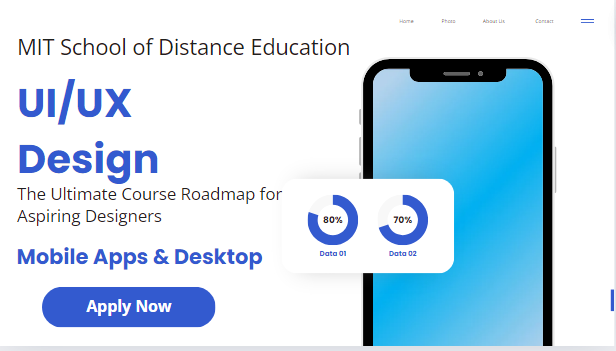
UI and UX design as a profession have found a significant amount of zeal in the past decade for all the right reasons. Many studies show the demand for UI and UX designers is increasing steadily. With the internet availability worldwide, the e-commerce industry relies on UI/UX designers to enhance their sales and user experience.
UI and UX design is an art and science that involves creating intuitive websites or mobile/web applications that are not only visually appealing but also functional and give the user a seamless experience of the entire website for a successful sale of a product, service, or even information.
Apart from creating appealing websites, UI/UX designers are also responsible for studying the behaviour of the users and ensuring that the user retention rate of the platform remains healthy, which signals a healthy viewership for blogs or sales for products and services. In this digital age, UI and UX designers have become vital to marketing and development teams, making this profession highly lucrative and versatile.
UI/UX design is a perfect blend of art and science; for more information, you can visit our website while we now discuss the course roadmap in this article!
Understanding UI/UX Design
Before discussing the course roadmap, knowing the differences between UI and UX is essential. While the User Interface focuses on the visual aspects of the digital platform, the User Experience focuses on the functionality of the entire platform along with the response of each of the elements added by the UI designers.
UX designers create wireframes to check the functionality, test two or more variations of the design, and then design the most intuitive design that is visually appealing and functional.
UI/UX designers work in tandem and ensure that the platform functions as expected while aligning with the organisation’s or individual’s brand image. They work together to collect user experience and keep enhancing the platform for a seamless user experience. While UI designers create stunning visuals for the digital platform, UX designers make the elements functional for a smooth experience that will help in user retention and, by extension, sales.
Essential Tools for UI/UX Designers
What Are The Tools Required For A UI/UX Designer?
As we all know, UI and UX design is a blend of art and science; as a result, designers use a variety of tools to create a beautiful and functional platform that is visually appealing and intuitive at the same time.
A few tools that most designers use to make these stunning websites or applications that you use every day can be categorised into two categories,
Namely –
- Functionality &
- Design
Functionality – These tools or software help the UI/UX designers build and test websites by adding elements to a mock simulation. These tools or software also allow designers to design elements, run tests, and use visual elements to test the website’s response and to get a clear image of how responsive the website will be. A few software or tools that help build wireframe mockups and elements are –
- Figma
- Adobe XD
- Axure
- Balsamiq
- Sketch & more
Intermediate Courses for Skill Enhancement
Many courses in the market teach UI and UX design. Things that you must keep in mind before joining the course are if these courses offer the following –
- A deep understanding of colour theory
- A practical dive into the many tools used to create design elements, mockups, and wireframe
- Principles of design
- A deep dive into user interaction and phycology
- Typography
- Layout composition & more.
MIT School of Distance Learning offers the best UI/UX design courses in Bangalore and countrywide. The teachers here focus on teaching our students the nuances of user experience and interface principles for a better understanding of building high-token intuitive websites! The course covers all the nuances of UI/UX designing. It ensures all our students are equipped with the required knowledge of the various design principles and practical application of tools.
Gaining Practical Experience
Internships And Entry-Level Job Opportunities –
Internships allow students to experience the real-world challenges of the industry and encourage them to build a strong portfolio of design with the help of their trainers and seniors for a better opportunity to kickstart their careers in this creative industry.
Networking And Building Connections In The Industry –
It is vital for UI and UX designers to build their network of clients and other UI/UX designers. Here are a few platforms in which one can participate to build their network –
- Seminars and Collaboration platforms like
- Marvel
- Figma
- InVision
- Axure & more.
At MIT School of Distance Education, we provide the best UI/UX course in Bangalore, which focuses on providing all our students with a clear course roadmap for a seamless transition to becoming a successful UX/UX designer!


